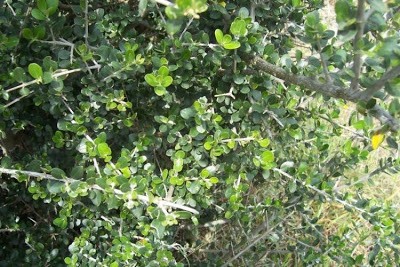The wild-olive
(Olea europaea europaea)

Description
Olea oleaster, the wild-olive, has been considered by various botanists a valid species and a subspecies of the cultivated olive tree, Olea europea, which is a tree of multiple origins that was domesticated, it now appears, at various places during the fourth and third millennia BCE, in selections drawn from varying local populations. The ancient and sacred wild-olive tree of Olympia stood near the Temple of Zeus, patron of the games. Today, as a result of natural hybridization and the very ancient domestication and extensive cultivation of the olive throughout the Mediterranean Basin, wild-looking feral forms of olive, called "oleasters", constitute a complex of populations, potentially ranging from feral forms to the wild-olive. The wild-olive is a tree of the maquis shrubland, itself in part the result of the long presence of mankind. The drought-tolerant sclerophyllous tree is believed to have originated in the eastern Mediterranean Basin. It still provides the hardy and disease-resistant rootstock on which cultivated olive varieties are grafted.
Taxonomic tree:







